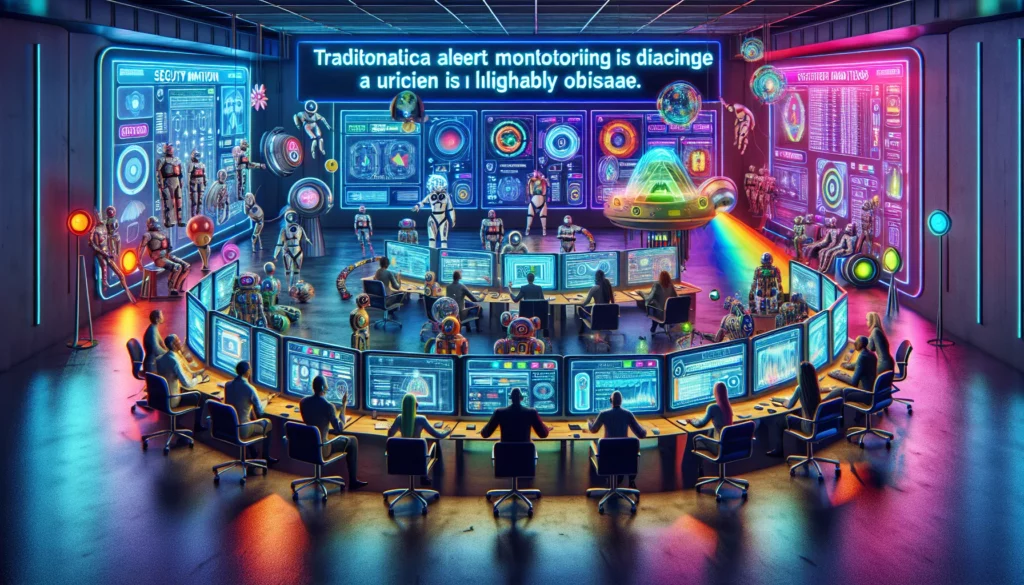CTEM: Evolving the Security Operations Center from Alert Monitoring to Risk Assessment
Security Operations Centers (SOCs) were originally designed for a different security landscape, characterized by perimeter-focused strategies and manageable alert volumes. However, the contemporary threat environment presents challenges that traditional SOCs struggle to address. The surge in telemetry data, combined with the existence of overlapping security tools and automated alerts, has led to an overwhelming situation for security teams. They often find themselves chasing indicators that may not lead to actionable insights, leaving significant threats overlooked in the process.
This issue extends beyond mere visibility; it revolves around the relevance of the alerts generated. Continuous Threat Exposure Management (CTEM) emerges as a solution that shifts the focus from reactionary stances to understanding the significance of threats. Instead of merely responding to incidents, CTEM emphasizes managing risk through targeted, evidence-based actions.
The Challenges of Alert-Centric Security
At its essence, the SOC functions as a monitoring mechanism, aggregating data from firewalls, endpoints, logs, cloud systems, and more, to generate alerts based on predefined rules. Yet, this approach has become dated in an environment where:
- Attackers can often evade detection by exploiting minor vulnerabilities in tandem to gain unauthorized access.
- Overlapping toolsets contribute to alert fatigue and send conflicting messages.
- SOC analysts experience burnout as they sift through alerts that often lack business context and operational relevance.
This paradigm treats each alert as a potential crisis; however, not all alerts warrant equal consideration, and many are inconsequential. Consequently, SOCs are pulled in numerous directions without a clear prioritization, addressing volume rather than value.
CTEM: Transitioning from Monitoring to Meaning
CTEM introduces a comprehensive, exposure-driven approach to security operations. Instead of beginning with alerts, CTEM prompts security teams to consider the following questions:
- What are the most critical assets within our operational environment?
- What are the realistic pathways an attacker might exploit to access these assets?
- Which vulnerabilities are currently exploitable?
- How robust are our defenses against these attack pathways?
CTEM is more than a mere tool; it is a framework that continuously evaluates potential attack paths, assesses the effectiveness of security measures, and prioritizes actions based on their real-world consequences rather than solely on theoretical threat scenarios. This approach does not suggest abandoning the SOC, but rather transforming its role from a passive monitor of historical data to a proactive anticipator of emerging threats.
Significance of the Shift to CTEM
The rapid adoption of CTEM symbolizes a profound evolution in enterprise security strategies. By shifting from reactive measures to active exposure management, organizations can mitigate risks not just by detecting compromises but by preemptively addressing vulnerabilities that enable such compromises. The fundamental tenets of CTEM underscore its value:
1. Focused Exposure Management
CTEM avoids the pitfalls of monitoring every potential alert. Instead, it concentrates on identifying actual exposures and their potential to cause harm, significantly reducing noise while enhancing alert accuracy.
2. Integrating Business Context
Traditional SOCs often operate within technical silos, divorced from essential business imperatives. CTEM integrates data-driven risk assessments, aligning security priorities with business vulnerabilities that could threaten sensitive information, critical systems, or revenue streams.
3. Emphasis on Prevention
In the CTEM model, vulnerabilities are addressed before they can be exploited. Rather than responding reactively to alerts after incidents occur, security teams are proactive in eliminating attack pathways and validating the effectiveness of existing security controls.
These principles encapsulate why CTEM represents a pivotal mindset shift. By centering on actual exposures, correlating risks directly with business outcomes, and prioritizing prevention, CTEM empowers security teams to act with greater clarity, precision, and purpose, ultimately driving measurable improvements in their security posture.
CTEM in Practice
While adopting CTEM may not necessarily reduce the number of security tools in use, it will change the way those tools are utilized. For instance:
- Insights regarding exposures will drive patching priorities over standard CVSS scores.
- Mapping attack paths and validating their efficacy will guide control assessments rather than relying on generic policy reviews.
- Validation efforts, including automated penetration testing or autonomous red teaming, will determine whether a real attacker could compromise valuable assets instead of merely assessing whether a control exists.
This strategic pivot allows security teams to transition from a reactionary threat assessment model to one of targeted, data-informed risk reduction, where each security initiative is intertwined with potential business consequences.
The Future of the SOC with CTEM
For numerous organizations, CTEM will complement the SOC, providing high-quality insights and directing analysts towards focusing on significant threats. In more progressive teams, CTEM may redefine the SOC itself, evolving not only operationally but also philosophically. This transformation signifies:
- Shifting from threat detection to threat anticipation.
- Prioritizing alerts based on context rather than generic classifications.
- Changing success metrics from effectively responding to breaches to ensuring that threats cannot initiate in the first place.
Conclusion: Prioritizing Value over Volume
Modern security teams require more than a deluge of alerts; they need to ask the right questions. Understanding what matters most, identifying genuine risks, and determining effective remediation steps are essential. CTEM provides these insights, redefining the purpose of contemporary security operations to focus on eliminating the opportunities for attackers altogether. The time has come to transition from a flood of monitoring to a targeted approach measuring what truly matters. CTEM represents not just an improvement to existing SOC frameworks; it embodies what the future SOC should epitomize.








